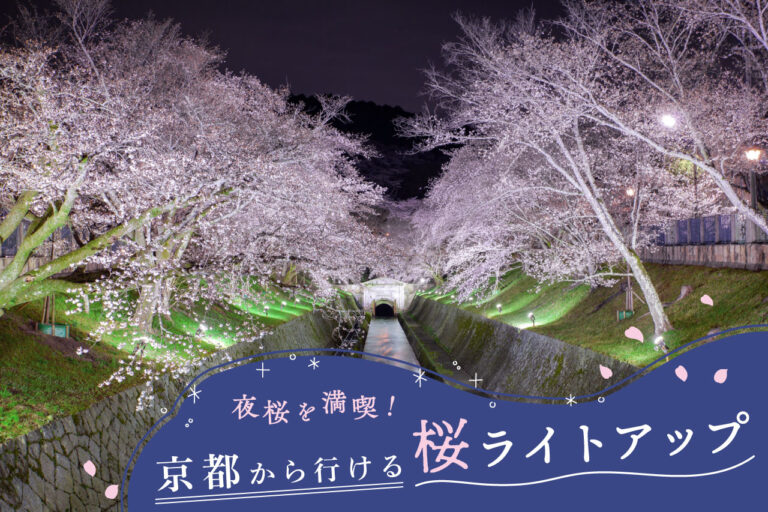
[2024] Enjoy cherry blossoms at night! Cherry Blossom Lights from Kyoto...
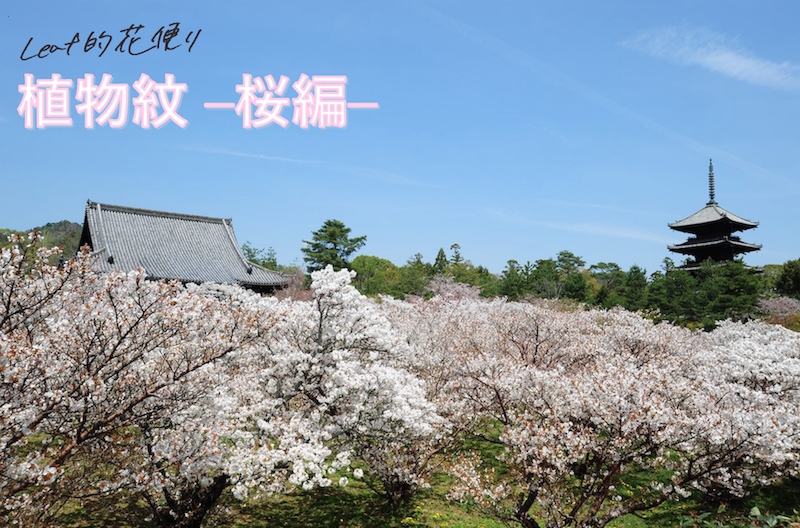

Rebuilt after burning down, architectural beauty to feel the Imperial Palace
The temple was founded in 888. Emperor Koko initiated the construction of the temple, but he died in the middle of the work. Emperor Uda succeeded him and completed the temple, which was renamed Ninna-ji Temple after its original name. After abdicating the throne, Emperor Uda became an ordained Buddhist priest and lived here, hence the name Omuro Gosho (Imperial Palace).
The Onin War destroyed most of the temple and the entire mountain was burned down. The main temple was taken to Shinkoin at the western foot of Futarugaoka, but it was not destroyed. Mr. Masahiro Yoshida, the chief priest of Ninna-ji Temple who also serves as the head of religious affairs, told us about the temple's history.
Most of the current temple buildings were reconstructed in the early Edo period (1603-1868), and some of them were transferred from the Kyoto Imperial Palace. The Kondo hall was given the Shikikinden style and the Mikado hall was given the Seiryoden style, and some of the palace's facades are said to remain.
For example, the Kondo Hall is a place of prayer. The roof, which used to be made of cypress bark, has been replaced with a tiled roof to temple specifications, which gives the hall a large and elegant impression. In addition to the morning service, the Kondo currently holds a memorial service for the repose of the coronavirus twice a day. The chanting of the sutra echoes well off the ceiling, and I feel that it deepens our prayers even more."
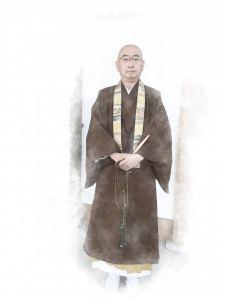

Masahiro Yoshida, Executive Director of Ninna-ji Temple, the head temple of the Shingon sect of Buddhism and the head minister of the Omuroha sect of the Shingon sect of Buddhism
Cherry blossoms planted for the Imperial Palace. The people also loved them, and the temple became a cherry blossom temple.
Ninna-ji Temple is also famous for Omuro cherry blossoms, which can be seen as the root of the crest, but they were not planted until after the temple was rebuilt in the early Edo period.
It is not certain when the Omuro-zakura were planted, but we can read from a book dated 1661-1662 and a map of the temple grounds dated 1683 that there was a cherry blossom garden at this time. It is likely that the cherry trees planted for the court were opened to the public, and the temple became known as a cherry blossom temple. In the late Edo period, about 200 years ago, the record left behind by the 29th monzeki, the cherry blossom crest is well marked."
The cherry blossom crest that has become a symbol in this way is a two-pulled cherry blossom crest with two lines drawn in the background. The cherry blossom crests on the roof tiles of the buildings you see in the precincts of the shrine do not have such lines.
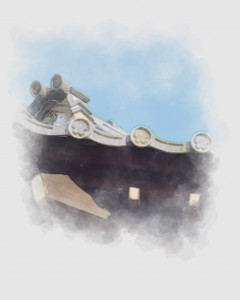

"The reason for this is that the tiles are prone to cracking if lines are put on them. The official crest is on the banners and amulets, but it is only found in the corridor in the palace. It might be fun to look for the "hidden crest" when you visit the temple.
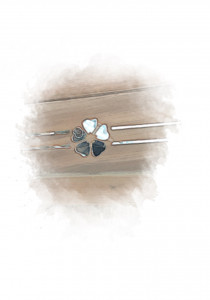

From azaleas to cherry blossoms to green autumn leaves. Flowers in the precincts carry the seasons.
The late-blooming Omuro-zakura is also characterized by its low height and blooms at people's eye level, and the sight of about 230 trees in full bloom at once has been designated a place of scenic beauty. It was said that the cherry trees happened to be low due to the nature of the soil, which makes it difficult for roots to grow, but recent research has revealed that clay soil is evenly buried 2.5 m underground.
It is a very large bonsai tree, and it looks like a large bonsai tree. It looks like a large bonsai tree. The Omuro-zakura, which blooms so that it is close to the people, is loved for its friendliness and seems to have been a link between Ninna-ji Temple and various people."
The Omuro-tsutsuji cherry blossoms are usually at their best in mid-April, but azaleas can also be seen in the precincts of the temple earlier. The "Kobano-tsubatsuba azalea," commonly known as the Omuro azalea, is the first azalea to bloom on the temple grounds. The "Omuro Flower Festival" is held from the end of March to the beginning of May, when flowers in the precincts of the temple change baton from azalea to Omuro-zakura (cherry blossoms), and then to green leaves. During this period, the Kondo Hall, which is not usually open to the public, is also open to visitors.
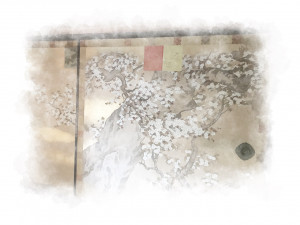

Initiatives to connect to the next generation while staying close to the people
As you stroll through the temple grounds, you will notice that art is scattered throughout, with artistic sculptures appearing and headphones set up to enjoy music created by famous artists to accompany the scenery.
We are also holding events such as lighting up the temple for people who are not familiar with the temple to see what the neighborhood has to offer. We want to be a place where people can casually come and say, 'Hey, there's something interesting going on at Ninna-ji Temple, let's go check it out.
The collaboration with diverse arts is the brainchild of Mr. Yoshida. Recently, the temple has been utilizing Instagram and LINE@ to distribute information to the younger generation as well. Although Ninna-ji Temple has one of the oldest histories in Kyoto and a background as a monzeki temple, it continues to be a familiar presence that is close to the people like Omurozakura.
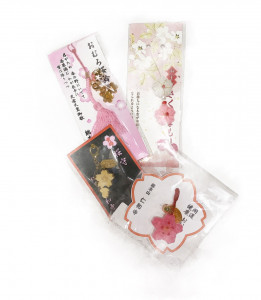

Family crests, which have been used as symbols of family status, and crests unique to shrines and temples, called kamon or temple crests, originated in the Heian period (794-1185) when court nobles added crests to their furnishings and personal belongings as landmarks.
There are currently more than 240 types, the most common of which are botanical crests with flower and leaf motifs, rich in plants of all four seasons.
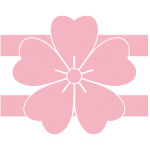

Over 600 interviews per year! An order site carefully selected by the editors who knows Kyoto and Shiga.
nowOfficial LINE friend registration500 yen OFF coupon is being issued!
 News
News Feature article
Feature article Featured event
Featured event